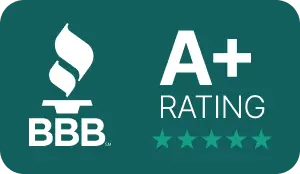When someone passes away, the way their estate is managed depends largely on whether they left a valid will. An estate with a will is known as testate, while one without a will is intestate. This distinction plays a critical role in probate proceedings and directly impacts how heirs access funds. For those considering an inheritance advance, knowing the difference between testate and intestate estates helps explain eligibility, costs, and timelines for receiving funds.
The Structure of a Testate Estate
In a testate estate, the deceased has outlined their wishes through a legally recognized will. Beneficiaries are named directly, and an executor is typically appointed to administer the estate. This clarity can make probate smoother because the heirs and their shares are already defined.
That said, even with a valid will, probate rules still require debts to be settled, taxes to be paid, and assets to be distributed under court supervision. This means beneficiaries may still face long delays before receiving their inheritance. For heirs in need of immediate funds, advances against their portion of the estate can provide timely support, especially when legal processes drag on.
The Challenges of Intestate Estates
By contrast, intestate estates often create uncertainty. When no will exists, state laws—known as intestacy statutes—determine who inherits and in what proportions. Surviving spouses, children, and sometimes extended relatives may all have a claim, which can complicate proceedings.
This added complexity frequently lengthens probate timelines. Disputes among heirs are more likely, and the court may need to step in to appoint an administrator. For heirs waiting on their share, these delays can feel overwhelming. Accessing a probate advance offers relief by providing cash upfront, though the uncertainty of intestate estates can influence how much funding is available and the cost associated with it.
Costs Tied to Estate Status
The legal status of the estate—testate or intestate—also impacts the fees tied to advances. Clearer estates with defined beneficiaries present less risk for funding companies, often making costs more predictable. By contrast, intestate estates with uncertain heirship or complex family structures carry greater risk, which can increase fees.
Heirs should carefully weigh the expenses associated with an advance in either scenario. Understanding the real cost of inheritance funding allows beneficiaries to make informed choices about whether accessing funds now outweighs the eventual reduction in their inheritance once probate concludes.
Waiting vs. Accessing Funds Immediately
Both testate and intestate estates are subject to probate delays, but the length and complexity often differ. For heirs without immediate financial needs, waiting may be manageable. However, when estates face extended timelines due to intestacy or disputes, accessing funds upfront may be more practical.
An inheritance advance allows heirs to bridge the gap between the promise of future inheritance and the reality of long legal processes. Considering the balance between waiting for probate and securing cash now helps heirs decide whether the trade-off makes sense for their circumstances.
Covering Expenses During Probate
Probate doesn’t pause everyday financial obligations. Whether the estate is testate or intestate, heirs often face personal debts, property expenses, and ongoing living costs while waiting for distribution. Using funding to manage these needs is one of the most common reasons heirs seek advances.
From paying off high-interest debts to keeping up with property taxes or handling tuition, an advance provides flexibility. For heirs navigating lengthy estate processes, the ability to cover debts, property costs, and personal expenses with inheritance funding often outweighs the wait.
Probate Rules as the Deciding Factor
The distinction between testate and intestate estates underscores the role of probate rules in inheritance funding. Courts determine how assets are validated, how creditors are paid, and how beneficiaries are confirmed. These rules directly shape whether an advance is available, how much can be advanced, and what heirs should expect during the process.
Understanding how probate rules affect access to advances helps heirs appreciate why estate status matters so much. Whether an estate has a will or not, probate remains the gatekeeper of inheritance—and funding exists as a way to ease the burdens created by that structure.
The Added Layer of Homestead Protections
In both testate and intestate estates, homestead protections may come into play. These laws safeguard the family home for surviving spouses and dependents, ensuring it isn’t easily divided or sold during probate. While this protection is valuable, it also means heirs may have limited access to the home’s equity in the short term.
For those exploring funding options, this makes advances tied to other estate assets especially important. By understanding homestead protections within probate, heirs can set realistic expectations about what can be advanced and what may remain restricted until probate concludes.
Conclusion: Estate Status Defines the Inheritance Path
Whether an estate is testate or intestate determines far more than who inherits—it also shapes the timeline, complexity, and accessibility of inheritance funding. A valid will may simplify the process, but probate still creates delays. Without a will, intestate estates face longer and more complicated proceedings that can make funding both more valuable and more complex.
For heirs, the key is understanding how legal status intersects with probate rules, costs, and protections. Advances exist to provide flexibility during what can otherwise be an extended waiting game. By recognizing how estate status impacts funding, beneficiaries can make better choices about whether to wait or access a portion of their inheritance now.








